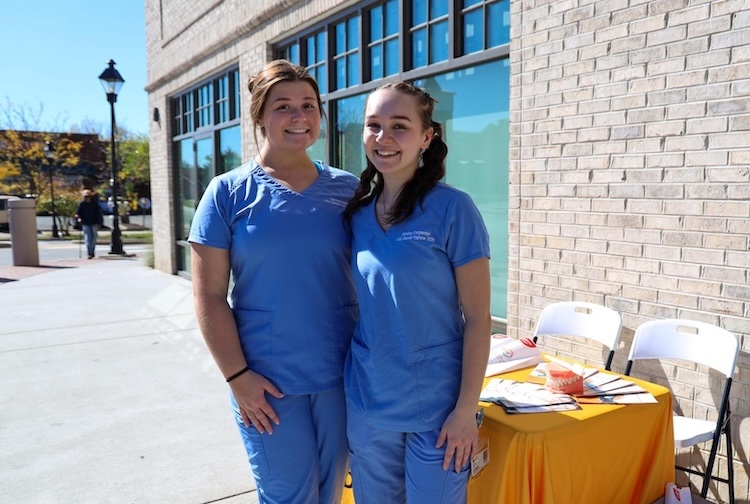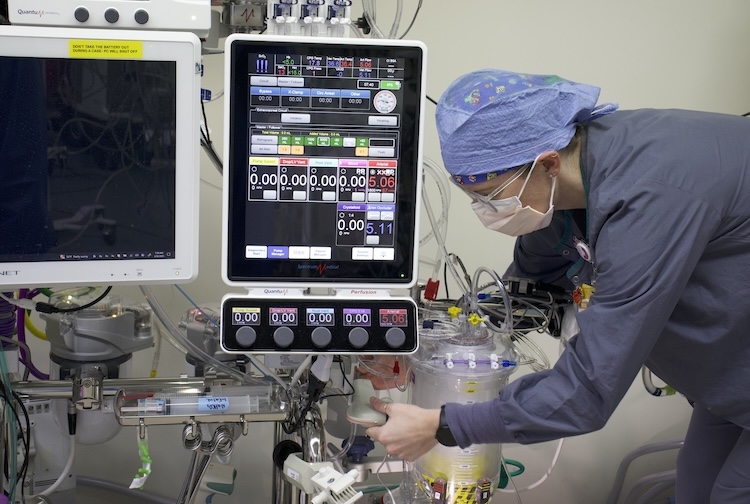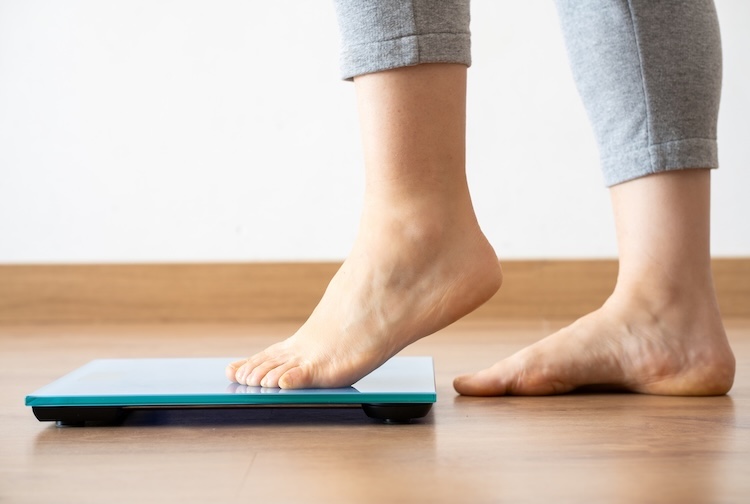Student adaptive sports group kicks into gear with Amputee Soccer Clinic
The event at VCU brought together seasoned athletes and newcomers.
October 03, 2025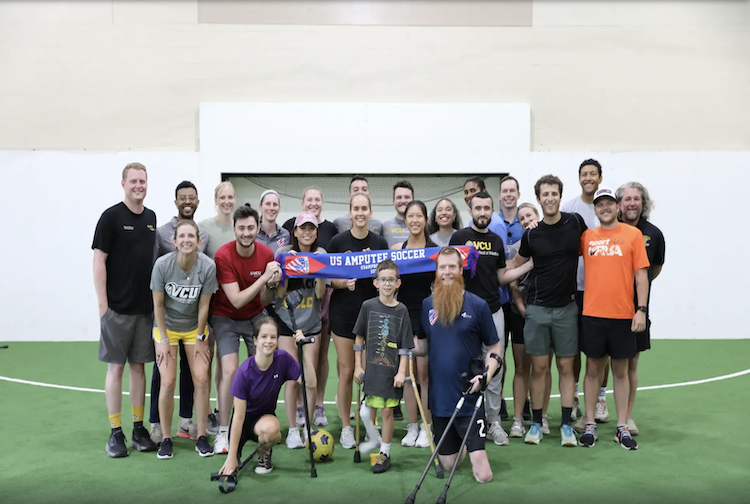 The Amputee Soccer Clinic was the first event hosted by the new Adaptive Sports Student Interest Group, which was founded by VCU medical student Anna Huang. (Arda Athman, School of Medicine)
The Amputee Soccer Clinic was the first event hosted by the new Adaptive Sports Student Interest Group, which was founded by VCU medical student Anna Huang. (Arda Athman, School of Medicine)
By Haley Tenore
The sound of indoor soccer – and the sight of inclusive sports – filled Virginia Commonwealth University’s Cary Street Gym.
With whistles chirping and the ball bouncing across the floor, the Richmond Amputee Soccer Clinic on Aug. 16 was both an athletic event and a learning opportunity. Organized by the Adaptive Sports Student Interest Group – a student organization in VCU’s School of Medicine – with partners including VCU Health Sports Medicine, the American Amputee Soccer Association as well as Sportable, the Richmond-based adaptive sports group, the clinic was open to all. Participants included professional amputee soccer players as well as VCU medical students trying the sport for the first time.
For Anna Huang, a second-year medical student and president of the Adaptive Sports Interest Group, the clinic represented the group’s fast-growing spirit since its founding last year.
“Our first meeting was honestly kind of rough. We only had two or three people join,” Huang said. “But at our second meeting, more than 30 people joined, which was awesome.”
The experienced gymnast became interested in athletics for people with disabilities while she was an undergraduate at UCLA, where she was team manager of the UCLA gymnastics squad. One of Huang’s classmates, a student with autism, would often join the team’s weekly dance lessons.
“Every single week, we just invited him into practice, and I could just see how much joy and how much confidence sport can give anyone,” Huang said. “Once coming to VCU School of Medicine, that was just something I wanted to create to open up the space for everyone to learn, so I started the interest group.”
The Amputee Soccer Clinic was the first event hosted by the group, which was created as a collaboration involving Huang, Sportable and River City Inclusive Gym – it provides programming for people with intellectual and developmental disabilities.
“It’s a sport that should be part of Richmond, but it's just not yet,” said Mary Caldwell, D.O., a physical medicine and sports medicine specialist with VCU Sports Medicine. “I’m the medical director for Sportable, and they don’t have the bandwidth to add it as a sport yet, because there are so many other sports and athletes they work with. So our goal is to create these kinds of clinics every two months to host athletes and then eventually build it as a team for amputee athletes to participate in.”
The August clinic, led by three-time Amputee World Cup athlete Keith Mann and sports physical therapy specialist Michael Fiorante, spotlighted key elements of 7-on-7 amputee soccer, including crutch-assisted walking and specialized rules for field players and goalkeepers.
Not everyone who participated had limb loss, and for newcomers to the sport, the use of upper-body strength created an impressive workout.
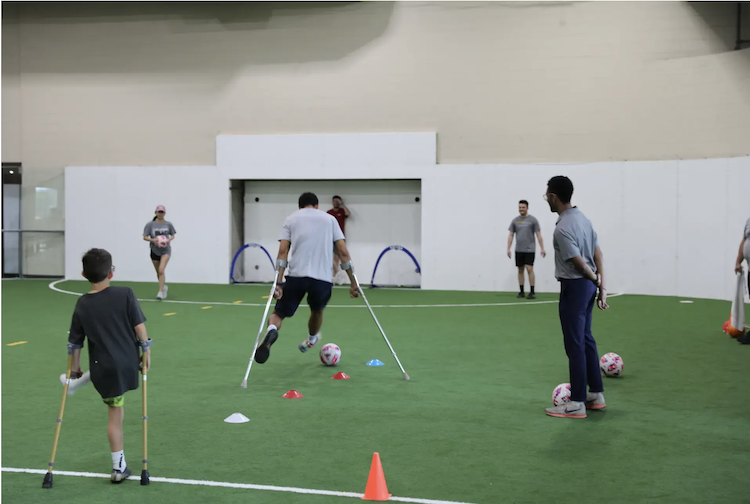
The Amputee Soccer Clinic in August spotlighted key elements of 7-on-7 amputee soccer, including crutch-assisted walking and specialized rules for field players and goalkeepers. (Arda Athman, School of Medicine)
“I knew it’d be challenging, but actually getting on the crutches and getting into it, you realize how difficult it actually is,” said Lilly Nelson, a classmate of Huang in the School of Medicine who was getting her introduction to the sports. “You rely a lot on that one leg that you’re actually using.”
Goalies in amputee soccer typically have a limb difference in an arm; those without upper limb loss compensate by tucking one arm into their shirt.
Caldwell noted that participants without limb loss play an important role as the initiative grows.
“It’s the only way to get a full scrimmage until we have enough amputee athletes,” she said. “The volunteers are crucial in helping athletes train and participate in the sport.”
Caldwell also emphasized how adaptive sports are highly individualized journeys for those navigating new phases of life.
“If they were an athlete, it’s often quite easy for them to pick up sports with adaptations, because there’s no other way of life. If you were athletic before, you will be athletic after,” she said. “What I find more challenging is the person who wasn’t athletic and wasn’t participating in sports before the injury, and then they get injured, and now they’re even less likely to exercise and are less likely to have access to those resources. We’re trying to reach that population as well – to help people realize that there are things they can do, even with a physical difference or a mental difference.”
Huang said she expects the clinic to be the first of many events at VCU hosted by the Adaptive Sports Interest Group, with another one scheduled for December 7 in the Cary Street Gym. Huang hopes to open the group to undergraduate students in the future.
A version of this story was originally published by VCU News


